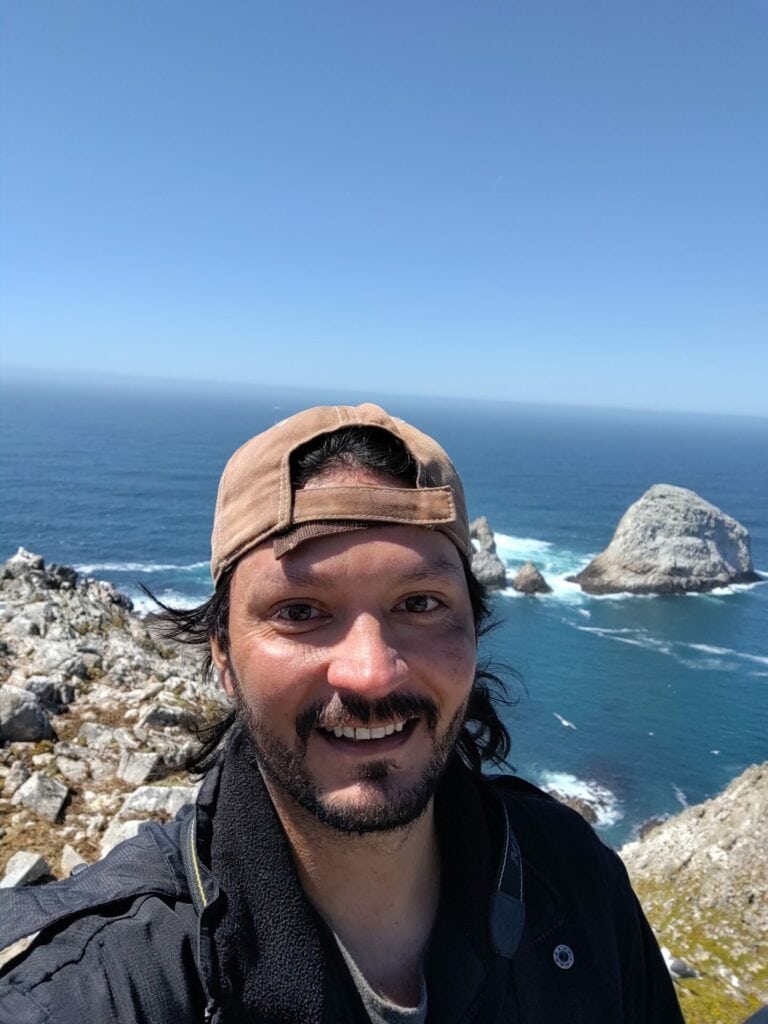Two weeks on the Farallones
By Michael Pierson
I recently had the pleasure of spending two weeks volunteering on the Farallon Islands as part of an invasive plant removal team. I work as a naturalist on a local whale watching boat and have spent many weekends circling the islands, wishing I could set foot on this forbidden place. The many books and articles I’ve read had given me an idea of what it would be like, but the reality was so much more than I imagined.

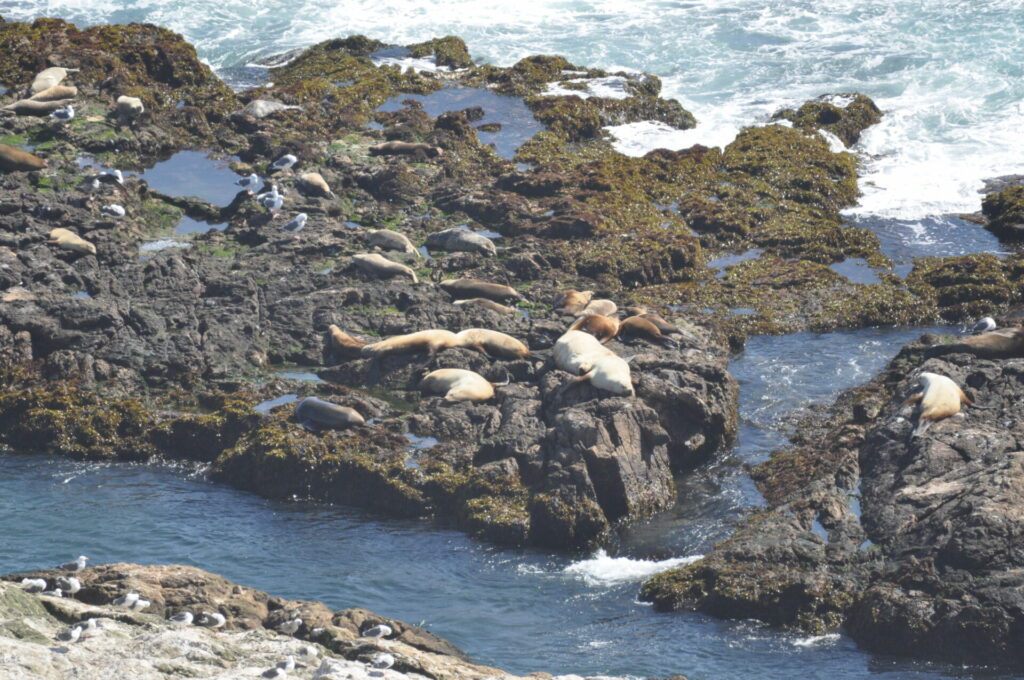
There’s lots of planning: filling out paperwork, rolling sleeping bags, cleaning the camera lens, and completing food order lists. This last task is no easy feat. Trying to determine how many apples, eggs, or slices of cheese you’ll consume in a week is harder than you would think. There’s limited storage, fresh food can go bad, and it all must travel to the island with you because you can’t just run to the store if you forgot to buy milk.
Flexibility is important because you don’t have a departure date so much as a window. If you’ve done a trip around the islands, you know the weather can be quite mercurial and accessing the islands is dangerous enough in good conditions. Four days before the target departure, we still didn’t know if we would be going. The wind picked up and didn’t seem to be calming any time soon. Finally, forty-eight hours before our anticipated departure, the forecast predicted a break in the wind and e-mails went out: “The trip is a go.”
The departure day started early, with everyone arriving at the dock by 6 a.m. so we could get there and unload the boat before the wind started again. Supplies and gear were loaded and we passed under the Golden Gate for a bumpy ride to the islands. On the boat were the U.S. Fish and Wildlife Service crew that I was part of and researchers from Point Blue Conservation Science, the non-profit organization that conducts most of the research on the island. Several of the researchers got seasick right away; fortunately, my time working on a boat saved me from the same fate.
I’d traveled this route countless times before, but this felt different. As the islands became visible in the fog and the smell of thousands of pinnipeds and hundreds of thousands of birds began to burn my nostrils, I couldn’t wipe the smile off my face. Seasick passengers are the first off. There is no dock on the Farallones, so people and supplies are loaded from a big boat to a little boat which is then hoisted out of the water by crane and placed on the island.
The first thing you must do on the island is clean and sanitize your shoes. Buckets, trays, brushes, and bleach are all important to ensure you don’t unintentionally introduce a new invasive species to the already inundated islands. Then supplies stacked on old carts are moved from the landing up the path to the houses. Two residences remain on the islands, houses built in the 1870s for the lighthouse keepers. So there’s access to warm showers, full kitchens, and soft beds. Point Blue maintains a constant presence on the islands and their team occupies one of them. The other is for visitors like me.
Being so excited means your senses are in overdrive. Surprisingly, you go “nose blind” quickly and the olfactory assault of a rookery fades, but the sounds of the islands are something special. During the day you hear the howl of the wind, barking sea lions, and screaming gulls, but at night it seems as if you’ve been transported to another place. The sea lions bed down and their spot in the cacophony is filled by Cassin’s Auklets sitting at the entrances to their burrows singing their little hearts out. The gulls are now quiet enough that you can hear Ashy Storm-Petrels fluttering about under the darkness of a new moon.
Mornings start early because there is a lot that needs to be done and the work can be quite challenging. You’re carrying heavy equipment up steep crumbly granite hills in inconsistent weather (hot and sunny one minute and cold and foggy the next) all while being pooped on, pecked, and screamed at by gulls that are unhappy with your presence around their nests. Their nests are everywhere—literally everywhere—and you really have to watch your step.
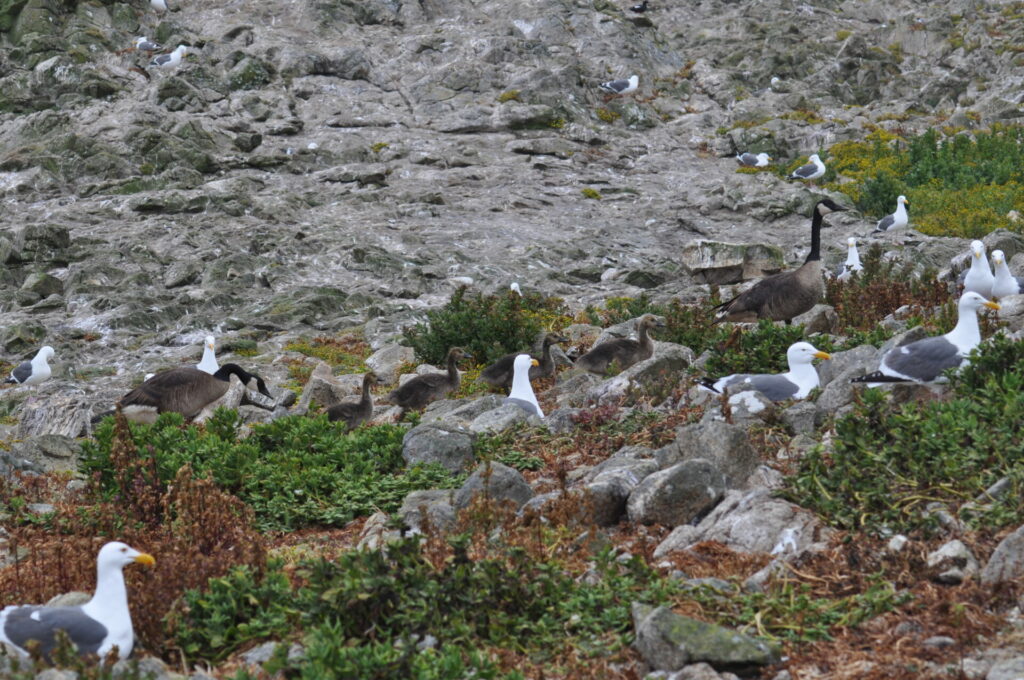
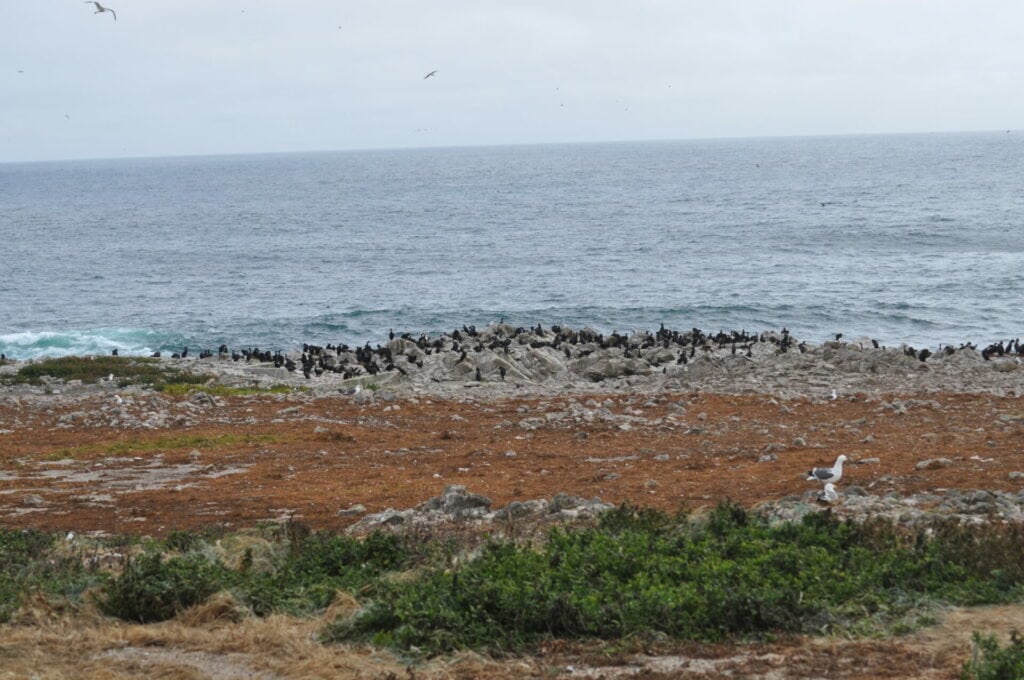

Mealtime is special. Individuals prepare their own breakfast and lunch, but dinner is family style. Everyone on the island takes turns preparing supper for the group. Some cooks are more advanced than others. For example, on one of my nights the prix-fixe menu consisted of a spinach and strawberry summer salad, coq au vin and a lemon meringue pie from scratch! But no matter what is served, it’s always well received.
After the table is cleared, everyone contributes to the daily journal—a daily recount of the islands’ goings-on. This has taken place every evening continuously for decades and includes such topics as interesting bird sightings, what was for dinner that evening, and dreams from the night before. I even looked up the actual day I was born. (Items of note were observations of a Western Gull stained blue from getting into some carbon paper and a dead adult female northern elephant seal at West Marine Terrace.)
The best time of day, though, was always free time. There wasn’t much of it, but it was the most enjoyable. I would walk out the front door of the house with Western Gulls incubating their eggs just feet away. Four hundred feet beyond that was a massive Brandt’s Cormorant colony, with Steller’s sea lions and then northern elephant seals down to the water’s edge.
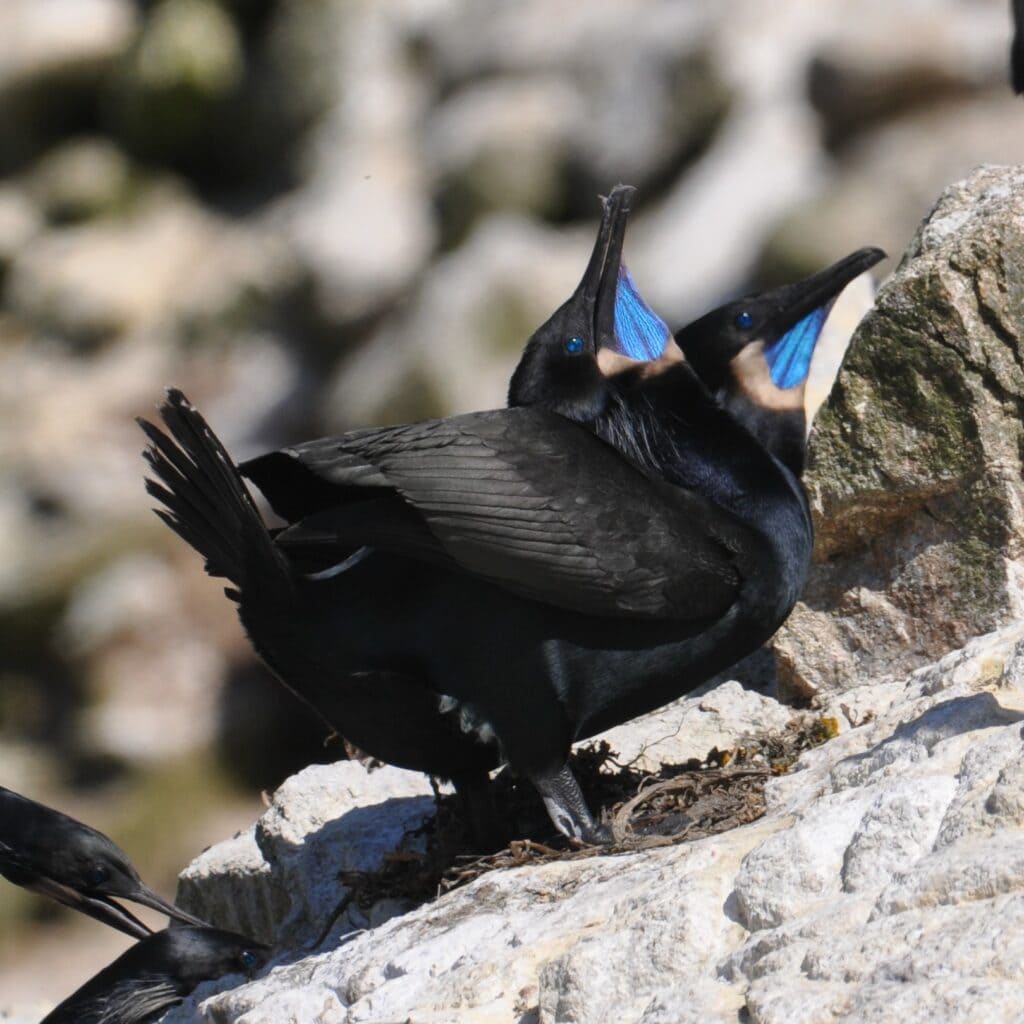
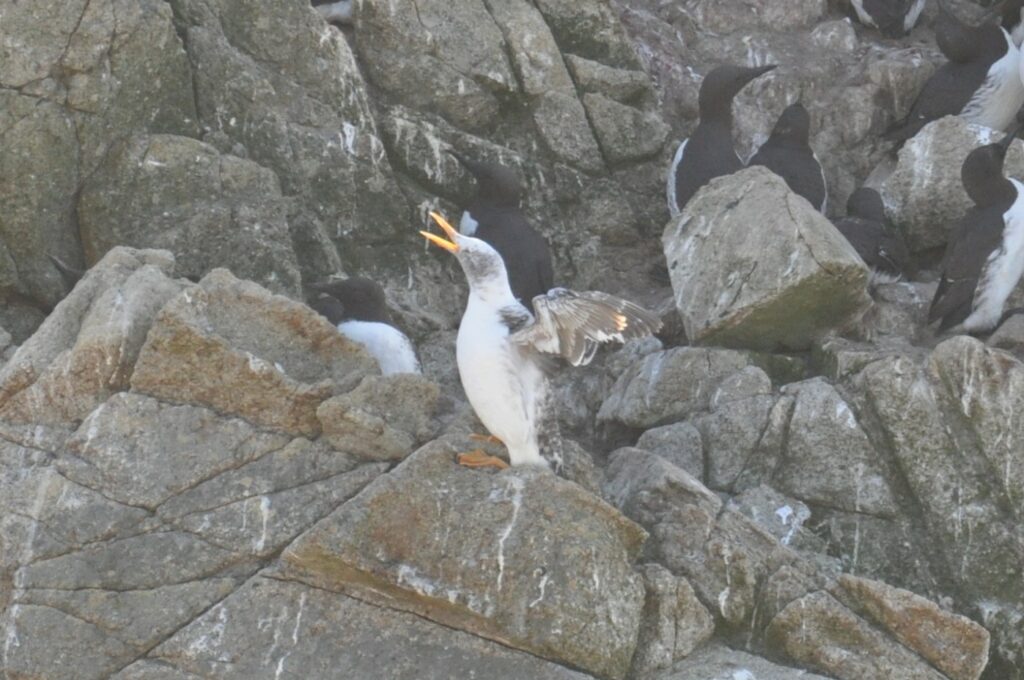
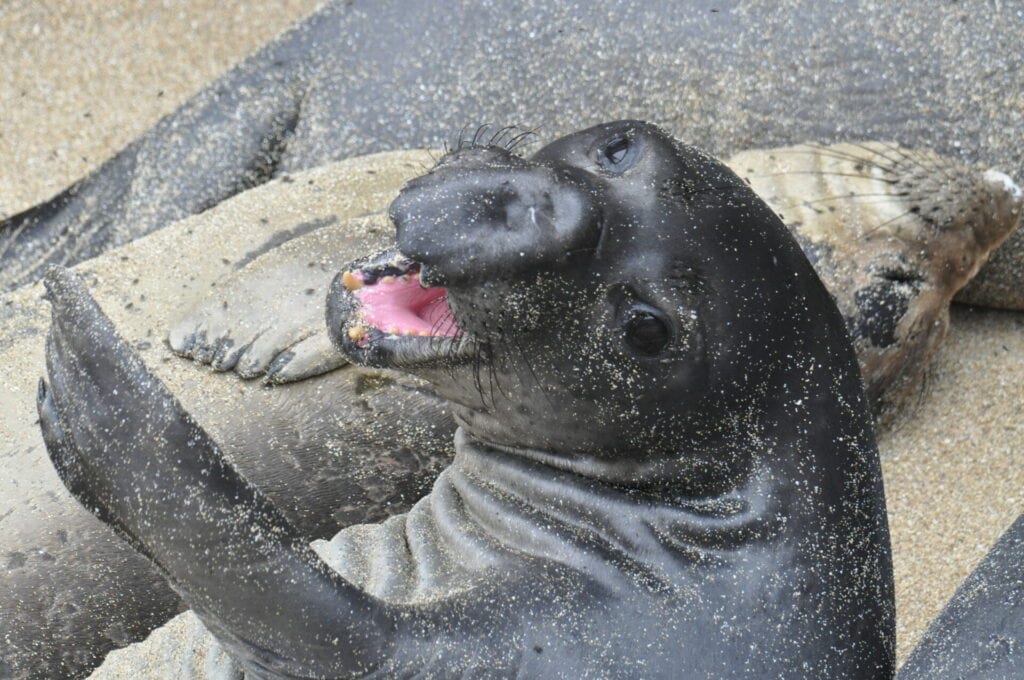
A short walk to North Landing and I’d encounter the squeaks of hundreds of Pigeon Guillemots sitting on the cliffs just above my head with Pelagic Cormorants and Tufted Puffins. Looking out on the water, I’d see Cassin’s Auklets, Rhinoceros Auklets, and thousands of Common Murres. One of the coolest things about the Farallones is the high number of vagrant bird species—more than any other wildlife sanctuary in the U.S. Out here when you hear hoofbeats, think zebras not horses. Birds from the East Coast or Hawaii are common occurrences and, because the islands are so small, most of them come to you, barely requiring the need for binoculars in many cases. There are even caves to explore that are home to the Farallon cave cricket, a species found nowhere else on Earth.
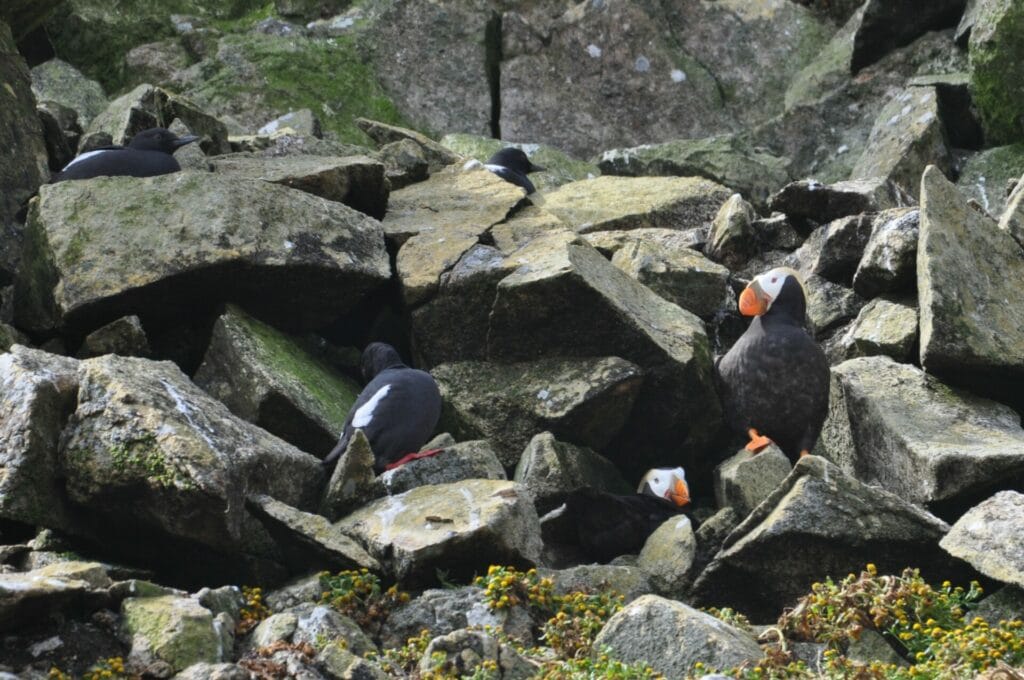
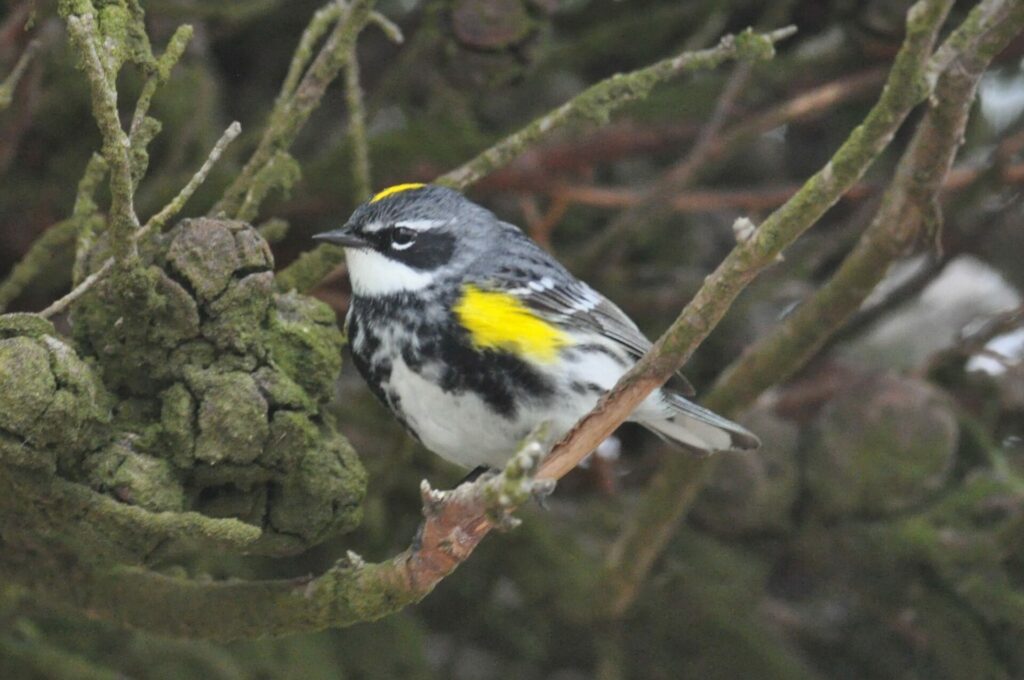
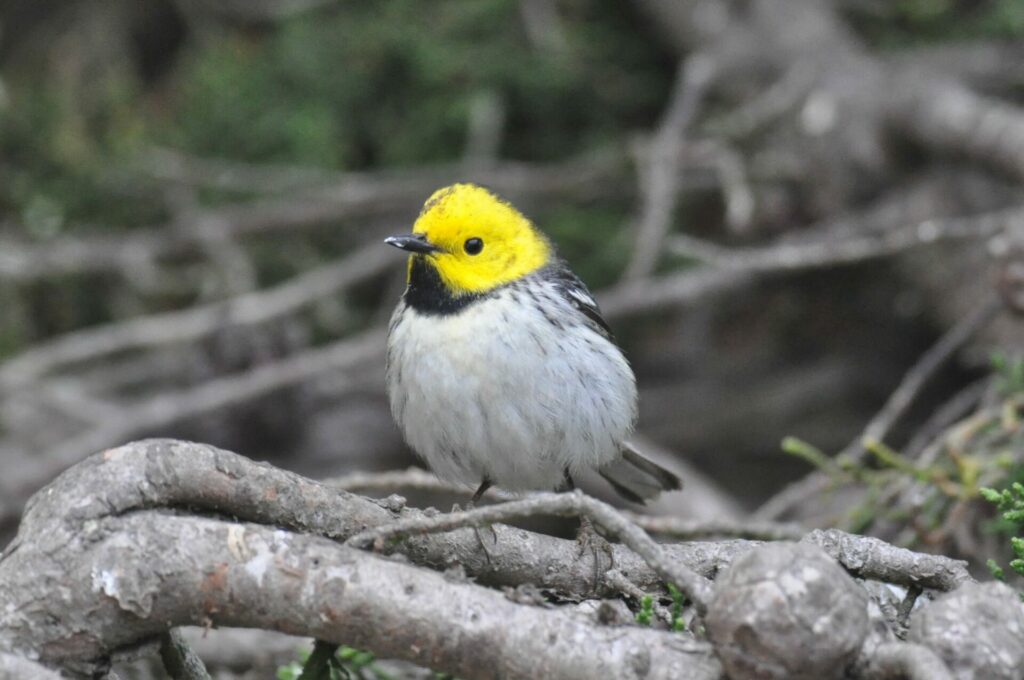
The day we left, we cleaned the house and packed our gear. Afterwards I took the opportunity for one last walk to absorb as much as possible. My final walk to East Landing was spent holding back tears. This place had taken hold of a piece of my heart, and it wasn’t ready to let go. I was so fortunate to experience what so few have and so many wish they could, and I hope I get to return some day.
Michael Pierson has worked as a natural resource interpreter in the San Francisco Bay Area for many years, for organizations like whale watching boats and the National Park Service. He has been a lifelong advocate of building stronger connections to the natural world by introducing people to creatures they may not otherwise realize live right in their own back yard.
